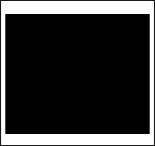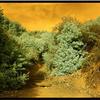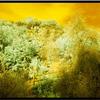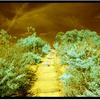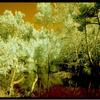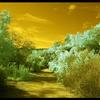BLANK
FRANKLIN CANYON INFRARED 90210
My surge into photography began in the early 1990’s with the discovery of the exquisite natural landscapes that surround the City of Los Angeles where I live. It was my desire to bring the unusual, natural beauty of such a vast urban area through photography. In 1991, I became a docent Volunteer in Parks (VIP) leading a monthly photo walk in Franklin Canyon Park, sponsored through the William O. Douglas Outdoor Classroom (WODOC) and Santa Monica Conservancy. My inspiration of the natural beauty of Franklin Canyon was clearer than my early skills as a photographer, so I went back to school and have been continued to study the techniques of photography, eventually earning a Master of Fine Art (MFA) majoring in Studio Photography from California State University, Los Angeles in 2000.
Visually capturing nature continues to be a major inspiration in my photography, while utilizing alternative techniques to capture images I find intriguing. Two methodologies that I most frequently apply for nature photography are 3D Anaglyph and black and white and color infrared. The 3D application, allows a photographer to bring the beauty of nature closer to viewers when in a Santa Monica Mountains park, or when holding an image in their hands away from the original site.
Before digital photography, I discovered infrared film, first black and white and then color. That infrared visually reads ultraviolet light, invisible to the human eye, offers the nature photographer a closer connection to the outdoors, as living, breathing foliage and fauna delivers deeper and richer tones than other subjects. Infrared still film rendered elegant, surreal images in black and white, where trees and other foliage produced a white snow like quality, and skies rendered a near blackness. The color film effects records red trees, pink and yellow skies. It was also a challenge when using infrared film photography, as the film had to be loaded and removed from the camera in complete darkness and the final print results were not always as predictable as desired.
While leading a monthly photo walk, discussing techniques and ideas with other photo enthusiasts, I also learn from the photographers who come on the walks. I am grateful to the photographer who shared his converted infrared camera, which led to my pursuit of digital infrared photography. I now can capture the same infrared effects in black and white and color that proved more challenging when using a film camera. Also, I can immediately check the infrared effects through the digital view finder.
A common question I have been asked when showing the infrared images is, “Can I capture these same infrared results using my digital camera?” Yes and no. There are some digital photo programs; including Adobe Photoshop, where similar qualities to infrared can be created with filters and extra time and effort. Otherwise, a digital photographer will have to remove the infrared blocker from the camera. This can be done by a technically proficient camera buff. I sent my digital camera to Life Pixels (http://www.lifepixel.com) to have the camera converted for infrared applications.
The images of FRANKLIN CANYON INFRARED 90210 begin at the Sooky Goldman Nature Center and the landscapes are arranged so that the viewer of these photographs can take a visual journey similar to what the physical experience of walking through the park.

